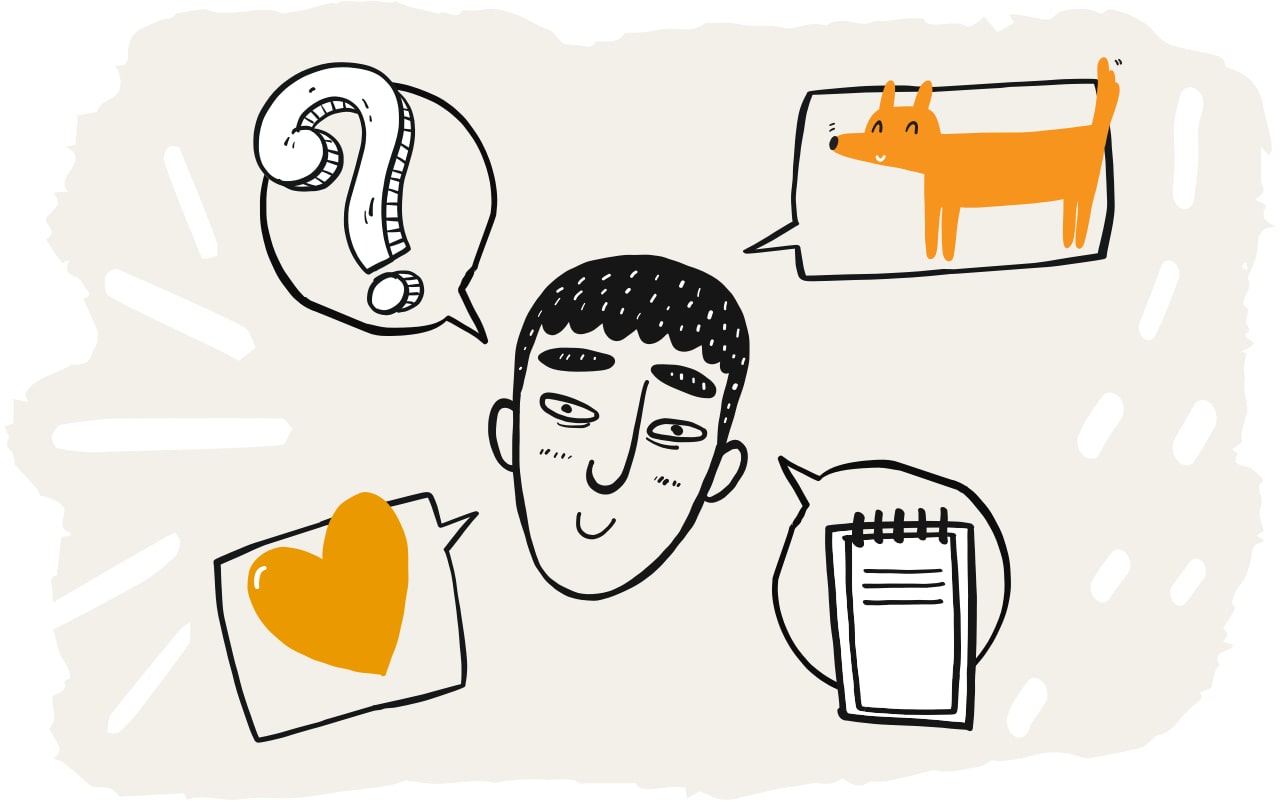MG comes in many types with differing symptoms.1
Myasthenia gravis (MG) can be as unique as people themselves, with symptoms often varying from person to person.2 Getting to a diagnosis may be a long and difficult journey. When doctors meet with people living with MG and discuss specific concerns or symptoms, they may consider a diagnosis of any of these types of MG:
- Generalized MG
- Seronegative MG
- Ocular MG
- Congenital MG
- Juvenile MG
- Transient neonatal MG
Whether you’re a person living with MG, a family member or a caregiver, it may help to understand these types of MG, how they develop and some symptoms commonly associated with each type. Discover a brief overview of currently used treatments for MG and read on for a closer look at the six different types of MG.
Myasthenia gravis defined
Generalized myasthenia gravis (gMG)
Our immune systems are supposed to create antibodies to fight disease. gMG is a rare neuromuscular disease that occurs when some of these antibodies mutate, or change, and become autoantibodies, attacking the body instead of helping it.3
Approximately 85% to 90% of the time, people living with gMG have a serotype identified through antibody testing.4 A serotype is the variation of MG that’s determined by the proteins targeted by autoantibodies in the neuromuscular junction (the site where nerves communicate with muscle cells). The generalized myasthenia gravis serotypes include1:
- Anti-acetylcholine receptor (AChR) antibody positive
- Anti-muscle-specific kinase (MuSK) antibody positive
- Anti-lipoprotein receptor-related protein 4 (LRP4) antibody positive
AChR, MuSK and LRP4 are involved when the brain signals the muscles to move. Autoantibodies disrupt this process, impacting muscle movement.4 About 80% of people with generalized MG test positive for AChR antibodies.2
If a person has generalized MG, including seronegative MG, they typically experience symptoms that impact many areas of their body. Their symptoms might include muscle weakness, trouble chewing and swallowing, and problems with speaking or smiling. They also might have difficulty doing everyday tasks, such as climbing stairs.5
Other symptoms of generalized MG include5:
- Drooping eyelids
- Blurred or double vision
- Crooked or down-turned mouth
- Twitching lips
Seronegative myasthenia gravis
When someone with MG has no identifiable autoantibodies, they may be considered to have seronegative myasthenia gravis.6
Seronegative MG is a type of generalized myasthenia gravis. People with this condition experience the symptoms of gMG, including problems with breathing, moving, speaking and swallowing.5
Ocular myasthenia gravis
Some people living with MG experience symptoms exclusive to their eye muscles. This is called ocular myasthenia gravis, and it affects about 10% to 40% of MG patients.7 In some people, ocular MG progresses into generalized MG.8
Common symptoms of ocular MG are diplopia (double vision) and ptosis (drooping eyelids).8 Often, people living with ocular MG notice that their eye muscles feel weakest at the end of the day.
Why does MG only affect eye muscles for some people? Eye muscles are structured differently than muscles in the arms, stomach, legs and back. They tend to be more vulnerable to attacks from the immune system.9
Pediatric myasthenia gravis
There are three types of pediatric MG: transient neonatal, congenital and juvenile MG.9
Having a conversation with children about myasthenia gravis may not be simple. Check out this discussion guide that was designed to help kids understand what MG is and what it does to the body. While this guide looks at ways to support a child whose loved one is living with MG, it may also be a helpful resource if they received an MG diagnosis themselves.
Transient neonatal myasthenia gravis
This type of MG affects 10% to 20% of babies born to women with myasthenia gravis.10 During pregnancy, mothers might pass their autoantibodies to a developing fetus.11
Symptoms, which usually appear in the first 24 hours of a baby’s life, may include11:
- Problems with feeding and sucking
- Weak crying
- Lack of facial expressions
- Difficulty breathing
- Limbs that appear floppy and the child is too weak to bend their elbows and knees
Usually, as the mother’s autoantibodies disappear from the baby’s bloodstream, the baby recovers. It may take a few weeks or months.10
Congenital myasthenia gravis
This type of MG can occur anytime from birth through early childhood.12 Unlike other types of MG, it’s not an autoimmune disorder. Instead, it stems from a genetic issue.
Symptoms of congenital MG resemble those of generalized MG.13 However, they might be milder if the condition appears later in life.13
Juvenile myasthenia gravis
This rare condition usually begins before age 18 and lasts throughout life. Symptoms might start gradually and could be hard to notice, so the disease may go undiagnosed for a while. The most common symptoms of juvenile MG are drooping eyelids and double vision. In more generalized forms, patients may experience fatigue and problems with eating and swallowing.10
Knowing the types of MG might help those living with MG, as well as caregivers, better understand the condition. It may also help loved ones provide more informed support. Healthcare providers may discuss MG types in more detail and provide information about managing symptoms.











